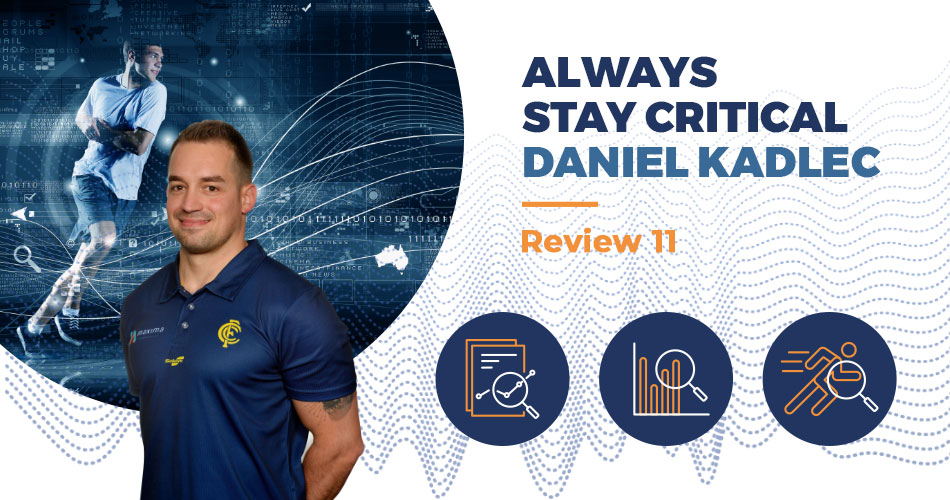Always Stay Critical – Review 10
What’s up, everybody. This is Dan with another rant on how to decipher research better. In the following video, I will show you some disclaimers about the data from one of my Ph.D. studies.
- We didn’t set up a hypothesis for these findings, but they were surprising enough to pursue a more in-depth analysis with the hope that this may serve as an explanatory analysis to inform future research
- Let’s all be mindful that this is one study with relatively small sample size and a frequentist statistical approach hence the results and ES might be spuriously inflated…just by chance
- The following intervention was individualized, so the true causal mechanism might not be as straightforward as the group analysis might reveal
- We need more of this, we need replication studies
For this project, we recruited 19 female rugby athletes, with the majority being in the current BF squad, and quantified their joint kinetics during an unplanned sidestepping task where they had no chance to use any visual-cognitive abilities because they had to respond to a flashing arrow. Additionally, we measured their dynamic seated calf raise, squat and hip thrust 1RM and isometric plantar flexion, isometric squat, and isometric hip thrust. So we measured their raw physical capacities and the used capacity in a sidestepping task. We split the participants into an ISO and DYN group. And individualized their set configuration, but each athlete did 10 sets of either ISO or DYN.
So, what was found? On the first slide with the results, you see the knee valgus moments during ground contact for the cutting step for the DYN at the top and ISO at the bottom. In the right panel, you’ll see if the change was significant. Both interventions did not reach a significant change. But when combining both groups, we see a considerable change in the early part of the ground contact. I read that it doesn’t matter what kind of resistance training you do – bet it DYN or ISO – as long as you get stronger in the areas you lack the most strength, you’ll be fine. Don’t overcomplicate it.
Next, we looked at knee joint power, as this measure incorporates the joint velocity and is easier to read in terms of how the imposed demands act on the joint.
When we analyzed the magnitude of the standard deviation, we found a decrease, yet only in the ISO group. This cloud around the mean is indicative of the athlete’s execution variability. The way we calculated execution variability, we averaged the point-by-point SD from initial contact to weight acceptance. In other words, the average width of the cloud around the mean. And it seems that training with ISO decreases your amount of execution variability…something we likely do not want in the long run.
So, what does it mean? Let’s get a bit theoretical about why a decreased execution variability is nothing great and nothing you want to train for in the long run. The best way to suffer an overuse injury is to be weak, as in whatever you do, let’s make sure imposed demands are high and come close to your load tolerance capacity and do this repeatedly. And now, if we consider more recent research highlighting that non-contact ACL injuries are likely not because of a one-off event, but much rather because of an accumulation of microtrauma over time which fundamentally reduces the load tolerance of these tissues, so that – at one point even – submaximal load or stress acting on the tissue level will consequently lead to injury, something we do not want to have.
And since you may only improve strength in certain ranges with ISO, you’ll likely rely on exactly those specific ranges more often than not when executing any movement. That may be your cascade to misery because, if in your sport you ever have to react to what’s going on in your environment and change your movement direction and rely on many movement solutions, having a decreased execution variability is not great. So that’s probably all sports apart from straight-line sprinting and maybe jumping events.
I’m hoping to read more papers with in-depth and sophisticated analyses about how ISOs or resistance training method changes movement beyond a CMJ analysis and an IMTP because that’s not telling us anything new or even insightful.
Thanks for listening. Always stay critical.











Responses